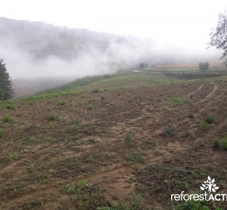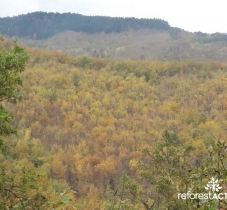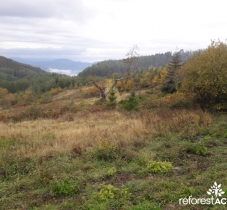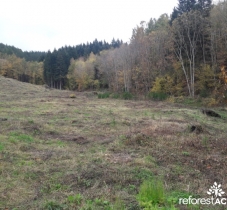Project description
Located in one of the most beautiful regions of Italy (Tuscany), the Pomino Forest borders the Casentinesi National Forest Park. Following the Second World War, this forest was totally planted in douglas pine, significantly reducing the biodiversity of the site.
Give back to this forest all its diversity !
The project at a glance
- Number of trees to be planted: 203,844 over five years
- Planting area: about 100 hectares
- Species planted: douglas fir, pine, cedar
- Species enhanced: pine, birch, chestnut, beech, pedunculate oak, sessile oak, hornbeam, hops, ash, maple, limewood, cherry tree
- Project type: support for natural regeneration, enrichment and diversification of the stand
- Planting period: Winter 2018-2024
- Certification: PEFC
Context
This medium-mountain forest is located at the gates of Florence, in a touristic region, which, beyond its obvious environmental functions, gives it an important social dimension (tourism, heritage, landscape...). It is a vast, homogeneous forest massif, nevertheless interspersed with agricultural and wine-growing plots. After the Second World War, the area was strongly resisted by the planting of monospecific blocks of Douglas fir (the majority), but also pine and larch. The douglas fir wood produced in the region is also renowned and benefits from a specific appellation. In addition, the whole forest is open to the public, with didactic signposting and maintained hiking trails.
Wishing to go beyond the strict role of wood producer, the owners decided some fifteen years ago to carry out a gradual conversion towards a mixed forest, more natural and more diversified. To do this, they chose to replant, after harvesting Douglas fir trees that were gradually reaching maturity, only one hectare out of three, the balance being initially left to regenerate, to be maintained and later converted into hardwood forest. All the work is carried out by local workers, who work in the vineyards for part of the season and in the forest the rest of the time. This policy is beginning to bear fruit, the forest is now diversified (coppice of oak, beech, chestnut, maple, ash, hornbeam ...) and more welcoming, which has allowed the return of the wolf, who is now permanently present.
But this management method comes at a cost: in addition to depriving himself in the long term of the income from the sale of Douglas fir, the owner now finds himself faced with coppice, sometimes very dense, which must be maintained to convert it into coppice under a forest stand, and this in a context of mountain forests generating very high operating and maintenance costs. Without help, this operation is very difficult to finance. The objective is to gradually convert the whole massif (2,400 hectares) to obtain one third of Douglas fir (production of high quality wood) and two thirds of diversified mixed forest, ideally structured as coppice under high forest.
Benefits
- 2018-2019 Program
Planting of 27,624 Douglas fir trees and promotion of the natural regeneration of hardwood species (oak, chestnut, birch and beech).
- 2019-2020 Program
Planting of 35,000 Douglas fir trees and promotion of the natural regeneration of deciduous species (oak, chestnut, birch and beech).
- 2020-2021 Program
Planting of 42,500 douglas fir and valorization of 20 720 deciduous trees in natural regeneration (pedunculate oak, sessile oak, hop hornbeam, ash, maple, lime, cherry), and conversion of the old coniferous plots by meticulous extraction of pines
- 2021-2022 Program
Planting of 38,000 trees (black pine, cedar and Douglas fir).
- 2022-2023 Program
Planting of 40,000 trees (black pine, cedar and Douglas fir). The silvicultural works initiated in 2021 to support natural regeneration is still in progress.
Once the project is completed, two-thirds of the forest will be converted into a diverse mixed forest suitable for the station. This conversion will enable an optimal balance to be struck between all the functions of the forest: economic, environmental, social (forest entirely open to the public, in a tourist region) and landscape (Tuscan heritage). Finally, the douglas fir trees present on a quarter of the area are necessary for local economic activity: their quality is recognised by the PEFC label and they are much sought after by local craftsmen.










